In 1857, a hiker and mechanical engineer from Campton, NH named Sylvester Marsh was climbing Mount Washington (highest peak in the northeastern US), and was met with a bad storm. It was this experience that spurned his idea to build a railway to its peak. He was granted permission from the legislature...largely because the legislature thought that such a railway was impossible and foolish, with some legislators stating that Marsh should amend his charter to not only go to the peak of Mt. Washington, but also the moon.
Marsh gathered $5000 from his own savings as well as hopeful neighbors, and devised a prototype of a locomotive with a rack-and-pinion system == it could climb steep grades by powering a cog gear that would mesh with a machined rack built into the railbed. The prototype brought attention...and investors.
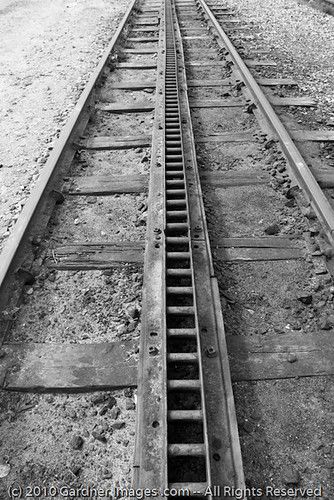
With no roadways, let alone truckbeds, available to assist Marsh with his project, the first locomotive was built in sections, each section being carried across the woods of the White Mountains by teams of oxen to the base station.
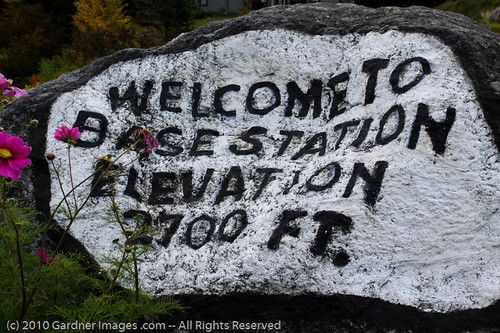
Her assembly was finished in 1866. She was named "Hero", and helped build the railway, In later days, she was renamed "Peppersass", as engineers and riders often thought her vertical boiler looked like a bottle of pepper sauce. She could carry 60 passengers.
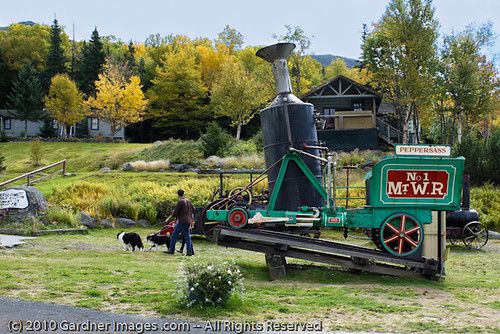
As word spread that the Railway to the Moon was actually becoming a reality, many excited passengers wanted to ride the railway before it was even finished. The first paying customers rode in 1868, riding to just past the "Jacob's Ladder" trestle, which sported a grade of over 37 percent (!!!)

Image courtesy of fansite www.cog-railway.com
The following year, construction to the summit was finished, to the rave review of passengers. Switching at the base station was later renovated to accommodate more trains.

Economics and environmental concerns brought about the conversion of the locomotives, such as the Algonquin, to bio-diesel.
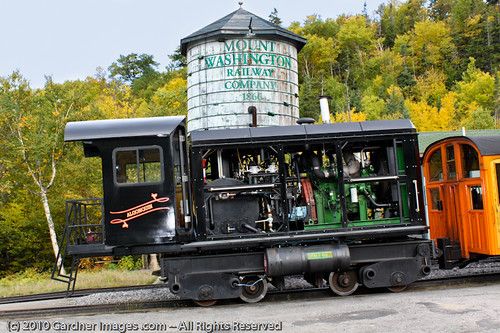
The cog maintains one or two coal engines, which see limited service due to their substantially higher cost to run and maintain. Engine #9, also named Waumbek (the Abenaki word for "white") remains in operation. She was built in 1908.

Engineer Joe gets Waumbek ready for her next trip up the mountain.
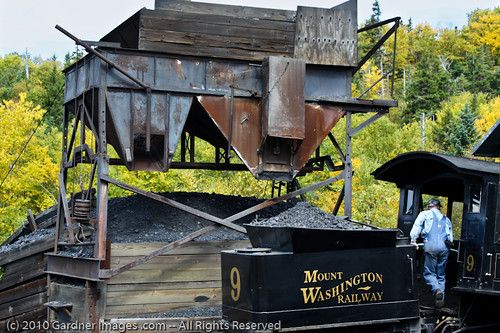
The Railway To The Moon in operation -- descending from the peak of Mount Washington.

Marsh gathered $5000 from his own savings as well as hopeful neighbors, and devised a prototype of a locomotive with a rack-and-pinion system == it could climb steep grades by powering a cog gear that would mesh with a machined rack built into the railbed. The prototype brought attention...and investors.

With no roadways, let alone truckbeds, available to assist Marsh with his project, the first locomotive was built in sections, each section being carried across the woods of the White Mountains by teams of oxen to the base station.

Her assembly was finished in 1866. She was named "Hero", and helped build the railway, In later days, she was renamed "Peppersass", as engineers and riders often thought her vertical boiler looked like a bottle of pepper sauce. She could carry 60 passengers.

As word spread that the Railway to the Moon was actually becoming a reality, many excited passengers wanted to ride the railway before it was even finished. The first paying customers rode in 1868, riding to just past the "Jacob's Ladder" trestle, which sported a grade of over 37 percent (!!!)

Image courtesy of fansite www.cog-railway.com
The following year, construction to the summit was finished, to the rave review of passengers. Switching at the base station was later renovated to accommodate more trains.

Economics and environmental concerns brought about the conversion of the locomotives, such as the Algonquin, to bio-diesel.

The cog maintains one or two coal engines, which see limited service due to their substantially higher cost to run and maintain. Engine #9, also named Waumbek (the Abenaki word for "white") remains in operation. She was built in 1908.

Engineer Joe gets Waumbek ready for her next trip up the mountain.

The Railway To The Moon in operation -- descending from the peak of Mount Washington.

Last edited:
